My 2023 Appalachian Trail Gear List
Hey, you! Yeah, you! I see you… checking out gear list after gear list. Welcome to the club, weirdo.
If you’re not someone crazy like me who spent countless hours researching and dissecting other people’s gear lists, welcome to the madness that is a gear list. This year I will be thru-hiking the 2,198.4-mile Appalachian Trail from Georgia to Maine and I’m gonna need some stuff to get me through living in the woods for six months.
While I’ve spent a great amount of time researching all of this gear, it’s not meant as a guide to what you should get if you’re interested in hiking the Appalachian Trail. Like many hikers, I’ve tested out various items until I found the right ones for me (although, spoiler, I actually haven’t tested out all of the gear I will be taking with me – *gasp*). Keep in mind that what I like may not work for you. Heck, by the end of the trail, I might also change my mind about some items!
With all that aside, here is the gear that I will be carrying on my back for the next few months:
The Big Three (+ Extras)
If you haven’t heard of this term, it basically refers to the items with the most weight that you will be carrying. These include your pack, your shelter, and your sleep system. These vary greatly from hiker to hiker and are heavily tailored to one’s comfort level. Let’s get started.
Pack: Gossamer Gear Mariposa 60
When I first started researching gear, I could not, for the life of me, choose a pack. There were so many options with so many great features and I was greatly overwhelmed. In the end, I went with the Gossamer Gear Mariposa, which is a 60-liter pack. When I saw that Gossamer Gear came out with a new insanely incredible color, I knew I had to buy it. The features I like the most about this pack are the double-stacked pockets on one side of the pack, the taller single pocket on the other side, the removable frame, and the stretchy front pocket. It also comes with a sit pad.
This is one item I haven’t tested out on a backpacking trip. I’ve taken it on day hikes (filled with all of my gear) and I’ve trained with it on the treadmill. Life is busy and a shake-down trip just wasn’t possible for this pack.
For a pack liner, I will be using an 18-gallon compactor bag.
Shelter: Big Agnes Tiger Wall UL2
Tents, tarps, and hammocks, oh my! Surprisingly, this was one of the easier decisions I made regarding my gear. I was debating between getting a semi-freestanding tent or a trekking pole tent. To make my life a little bit easier, I went with the first option. I love the idea of trekking pole tents and someday I will try one, but I knew that I wouldn’t want to deal with the amount of condensation that can come with trekking pole tents and the tent platforms in New England. Yes, all tents can get condensation, especially on the AT. However, I think it’ll give me a little more peace of mind (and dryness). So far, I love this tent! It’s easy to set up and tear down, and I have yet to have any issues with it (*knocks on the nearest tree while setting up tent*).
For a ground cloth, I will be using a piece of Tyvek cut in the shape of my tent.
Sleep System: Enlightened Equipment Revelation APEX Quilt and Nemo Tensor Sleeping Pad
Instead of a sleeping bag, I will be bringing a quilt. I thought long and hard on this one and what eventually drove me to settle on the quilt was saving a little bit of weight. However, I wasn’t going to compromise warmth so I chose a 20°F, synthetic quilt from Enlightened Equipment. Since there was a custom option, I chose the wildest combo I could think of and made it hot pink and bright yellow. If you catch me at a shelter in this hot piece of gear, say hello! I also love that the quilt can strap onto your sleeping pad – genius!
For my sleeping pad, I just couldn’t compromise comfort. I tried out a yoga mat-type sleeping pad on a 30-day archaeology field project in the wilderness. It was doable, but I was definitely in pain by the end. So I thought to myself, never again! I love the thickness of the Nemo Tensor sleeping pad (3 inches!) and its R-value of 4.2 (its insulating power). Catch me sleeping like a baby on the trail!
Pillow: Trekology Aluft Pillow Deluxe
I am a strong pillow supporter. Since I usually wear all the clothing I have to sleep (except my hiking clothes), I don’t have enough things to stuff into a stuff sack to create a pillow for myself. I love this pillow from Trekology. It’s inexpensive, lightweight, and it comes with a detachable strap that you can use to better secure it to your sleeping pad, which I love.
Clothing
Cue the Grinch: “But what would I wear?” Great question. What are you even supposed to wear on a six-month trip into the woods? It’s not a fashion show by any means, but clothing is a really important piece of gear when it comes to keeping you warm and wicking away moisture. In this section, I’ll talk about daily hiking clothes, baselayers, cold-weather clothing, and other miscellaneous clothing items I will be sporting at some point along the trail.
Of note: instead of worrying about putting permethrin on my clothes every so often while on the trail, I chose to send a few pieces to Insect Shield. This company professionally treats your clothing against insects and it lasts way longer than the permethrin that you would spray onto your clothing (70 washes!). I chose to send in my hiking shirt, hiking pants, hiking shorts, my baselayer top and bottoms, three pairs of socks, and my jacket midlayer.
Day Clothes: Jolly Gear Triple Crown Button Down, REI Sahara Convertible Pants, REI shorts
During the day, I will be wearing my trusty Jolly Gear shirt and REI pants or shorts. I love the breathability of all three and their moisture-wicking power. The shirt has some great features like a hood, thumb holes, chest pockets, and a hole in the hood for your hair (not to mention the incredible pattern). The pants are so comfy and I love that they are adjustable at the waist and I can zip off the bottom half if I get too hot. I will probably switch them out for just the shorts when it gets into the sweltering summer and send them back to myself before the Whites.
Baselayers: Smartwool Merino 250 Baselayers
At the end of the day when I get to camp, I will be changing out of my clothes (barring immense exhaustion) into my baselayers. This will help to air out my day clothes a bit and give me something clean(-er) to look forward to in the evening. I might use these the whole way, but I might swap them out for something cooler in the summer and get them back before heading into the Whites. Or I might keep them and just sleep in my undergarments if it’s too hot.
Socks: Injinjis and Sealskinz
I LOVE Injinjis. If you haven’t heard of this brand, they’re known for their toe socks, which help prevent blisters. Before switching to these socks, I had tons of blisters. Since I have bunions, my toes are closer together and overlap causing lots of painful rubbing when hiking. I found that toe socks heavily prevented blisters in between my toes and I have not looked back. In the past, I have sometimes used Darn Tough socks over my Injinjis, but sometimes I find that combination still too tight on my toes. For now, I’ll be sticking to just my toe socks, but if I feel like I need more cushion later on, I might be adding my Darn Toughs back to my rotation.
I will be bringing two pairs of Injinjis and switching them out every other day if I can. I will also bring a thicker, regular pair of Injinjis as my sleep socks. Additionally, for the colder and wetter days, I will be bringing along a pair of waterproof Sealskinz socks. I hate cold and wet feet, so to try and prevent that as much as possible, I will wear my Sealskinz socks when it’s snowing or raining in really chilly temperatures. I’m still boggled by how these socks work, but I have literally stuck them under my bathroom faucet and they succeeded in keeping water out.
Undergarments: ExOfficio Underwear and Walmart Sports Bra
When it comes to a sports bra, I’m not terribly picky as long as it’s supportive and moisture-wicking, so I’m going with my trusty Walmart one. However, for my underwear, I need something that’s really gonna do a good job of not making me feel like a soggy, sweaty mess. ExOfficios are my go-to’s while doing archaeology everywhere from the humid Florida coast to the unbearable heat in the Wyoming mountains. They have not failed me.
I will be bringing two pairs of underwear and one sports bra. I’ll be switching out and washing my underwear every couple of days and I will just wait to wash my sports bra when in town with the rest of my clothing (I’ve used one sports bra for two weeks straight before).
Layering Pieces: Mountain Hardware Down Jacket and Pants, Arc’teryx Jacket, and GooseFeet Gear Down Booties
These items will add warmth to my wardrobe and I will not be wearing most while hiking. For my puffy, I chose the Mountain Hardware Ghost Whisperer 2 Jacket. It keeps me so warm! I also chose to get a Mountain Hardware Ghost Whisperer Pant for those really cold nights on the trail. I’m the kind of person that sleeps very cold and I can’t stand shivering all night long. However, I will definitely be sending them home sometime after the Smokies. Next, my midlayer is an Arc’teryx Kyanite LT Hoody. It’s definitely not the warmest thing out there, but at 8.8 ounces I felt that it was worth it. Lastly, I also have a pair of GooseFeet Gear down booties for those nights when my feet are feeling like ice blocks.
I will be trying my best to only wear my Arc’teryx jacket while hiking to keep my down jacket dry. However, if it gets really chilly I might wear it on the trail, but I would sooner wear my raincoat. The pants and booties will definitely be an at-camp-only piece of gear.
Miscellaneous Clothing: Winter Hat, Gloves, Buff, and Visor
For the colder weather, I will be wearing a Zpacks beanie and Black Diamond gloves. In the warmer months, I will be using a Buff to hide my nasty, unwashed hair. For some sun protection, I will be bringing a visor (I know they call it the Green Tunnel for a reason but my eyes are very sensitive to any light, leading to migraines).
Rain Gear
REI Rain Jacket, Frogg Togg Pants and Poncho, Dish Gloves, and Pack Cover
At the start of the trail, I will be bringing my REI rain jacket and Frogg Togg Pants. I needed a jacket with a better hood and pockets, so I had to ditch my Frogg Toggs rain jacket. Once it gets warmer, I will send the pants home and might trade them out for a Bluefield rain skirt or trade both my jacket and pants for a Frogg Toggs poncho. I’m unsure, mainly because of the next item on my list.
I will also carry waterproof dish gloves to protect my winter gloves from getting wet and to help me set up my tent in the rain without losing too much dexterity.
My pack is water-resistant but not waterproof so I will be carrying a rain cover.
Six Moons Designs Silver Shadow Carbon Trekking Umbrella
As a last-minute decision, I have decided to add a trekking umbrella to my rain gear. I have not tested this piece out and likely won’t get to do so until I hit the trail. I have thought long and hard about this gear item for over a year and finally decided to bite the bullet. Because of this item, I might choose to send my rain pants home earlier and not send myself additional rain gear. I’ll just have to see if I love the umbrella or not while on the trail.
I’ll have the option to attach it to my pack using shock cord and cord locks.
Footwear
Hiking Shoes: Topo Athletic Terraventure 3 Trail Runners
Your hiking shoes are an incredibly important and individual piece of gear. This is one piece of gear that can be highly variable from person to person. Some people prefer hiking in boots, while others prefer trail runners. When I first started backpacking, I wore Merrel hiking boots. However, after a few trips, I couldn’t bear them any longer because of how many blisters I would get from wearing them. They also felt very clunky and heavy. I soon switched to a pair of Altra Timps and loved them until they started giving me arch pain. I wore them on my thru-hike of the Knobstone Trail and they gave me no blisters and allowed me to go much faster, but by the end of the trip, my arches were on fire.
After that, I was at a loss with what shoes I would wear on the trail. Recently, I have been testing out the Topo Athletic Terraventure 3 trail runners. I have not worn them on a backpacking trip, but have day hiked in them and worn them around as much as possible. So far so good, but I’m sure my feet will let me know if they hate them pretty soon while on the AT.
I’ll be wearing Topo Athletic gaiters with these shoes.
Camp Shoe: Knockoff Crocs
To me, camp shoes are a must. If needed, they can also work as water-crossing shoes. On my first few backpacking trips, I would bring a pair of Tevas with me. As weight has become more and more important to me, I found out that my Tevas weighed over a pound. Definitely too heavy for a thru-hike. Because of this, I have decided to go with a pair of knockoff Crocs. They are lighter and cheaper than the OG Crocs.
Cooking Gear
Pot: TOAKS Titanium 750 ml. Pot
I chose a titanium pot to save weight and the 750 ml. size allows me to boil enough water for a meal and tea. I’ll carry a bandana with my cook pot to be able to clean it out.
Stove: MSR Pocketrocket 2
This is a compact and lightweight stove that has worked great for me so far.
Spoon: XITAI Titanium Long Handle Spoon
I prefer a spoon over a spork and the long handle allows me to reach the depths of a Mountain House bag without getting my hand dirty.
Insulated Bag: Namumaru Insulated Resealable Bag
I know many people choose to cook their food directly in their pot, but to keep it as clean as possible and make it less of a bear attractant, I choose to cook all my meals in a Mountain House (or another brand) bag. I learned this technique at an archaeology field camp and it works great for me. Let me explain. I boil my water in my cook pot and then pour it into the Mountain House bag, seal it, and put it in my Namumaru insulated bag to let my food keep on cooking. I will reuse the same Mountain House bag for as long as the bag lasts (sometimes the zipper breaks) and then replace it. To clean this bag, I will pour a small amount of remaining hot water into the bag, shake it, and drink my ‘dishwater’. Yes, it’s nasty, but pouring it out would be a bear attractant. I greatly enjoy this technique and you can just keep on reusing the same Mountain House bag and just pour in other foods (ramen, Knorr sides, instant mashed potatoes, etc.). Works for me!
Lighters and Fuel Canister
I’ll carry two lighters just in case and one fuel canister that fits inside my pot.
Food Bag: Hilltop Packs ECOPAK Food Bag
It’s my cat on a food bag! Best thing ever! I’ll carry a Hilltop Packs rock throw sack, carabiner, and dogbone, and 50-ft. paracord (I’ve switched out the bulky paracord in the picture to something lighter) for all my bear hang needs.
Electronics
Portable Charger: Nitecore NB10000 Gen 2 Power Bank
Haven’t used it, but have heard great reviews.
Head Lamp: Nitecore NU25 360 Lumen Triple Output
Great headlamp. Includes a red light and is rechargeable.
Satellite Communicator: Zoleo
I went back and forth between the Zoleo and the Garmin In-Reach and eventually chose the Zoleo. The Zoleo is cheaper, I have familiarity with using one, I can use my phone to send messages, and it’s not much heavier than the Garmin In-Reach. There are definitely pros and cons to both, but I think for my purposes (sending a quick message every night to my family), the Zoleo will do just fine.
Headphones: Apple Headphones with Cord
No hassle of charging or losing an earbud.
Phone: iPhone 13
I bought a new iPhone solely for the purpose of taking it on the trail. My old phone was a second-generation iPhone SE and its battery was horrible and it had barely any storage.
Charging Cords
I will be bringing a charging cord for my iPhone, headlamp, Zoleo, and battery pack. My headlamp and Zoleo thankfully share the same kind of charger allowing me to bring only three.
Wall Plug
A 2-port wall charger will allow me to charge two devices at once, saving time.
First-Aid/Repair Kit
- Regular bandaids
- Blister bandaids
- Triple antibiotic cream
- Alcohol wipe
- Leukotape
- Zip ties
- Nail clippers
- Gorilla Tape
- Swiss Army Knife
- Tick key
- Safety pins
- Needle
- Medications: Ibuprofen, Tums, antidiarrheal, allergy, and Melatonin
- Tent splint
Water Purification
I’ve always been a Sawyer filter user, but for the AT I will be trying out the Katadyn filter. My mom loves it and I’ve used it a couple of times and I think it’ll be worth it to have a faster filter, even if I have to purchase a second one at some point on the trail.
I will use my Katadyn with a 2-liter CNOC bag and filter the water into two 1-liter Smart water bottles. I will also have emergency water purification tablets in case of any filter malfunctions.
Toiletries
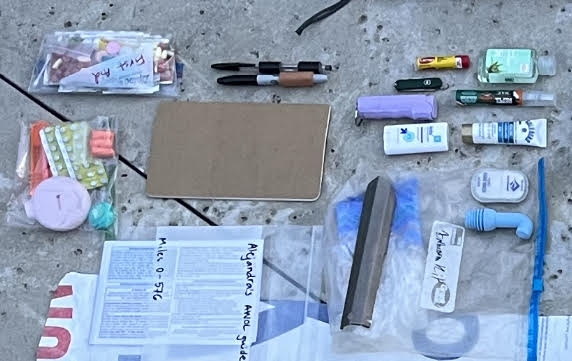
Don’t mind the blurry picture, I was editing this last minute the night before I hit the trail…. (not all gear listed below is shown in image).
- Kula Cloth
- Portable bidet
- Vargo Titanium Dig Dig Tool (poop trowel)
- Baby wipes
- Hand sanitizer
- Biodegradable soap
- Toilet paper
- Toothbrush
- Toothpaste
- Dental floss (can be used as thread in a pinch)
- Q-tips
- Chapstick
- Lotion
- Hairbrush
Note: I used to be a contact lens/glasses wearer, but I made the conscious choice to get PRK eye surgery done before the trail so that I wouldn’t have to deal with those things. If it’s something you can afford or someone wants to help you pay for it as a gift, do it. I can’t believe how much easier my life is because of laser eye surgery and now I don’t have to worry about carrying extra stuff to see while on trail!
Miscellaneous Gear
- Trekking Poles: Black Diamond Trail Ergo Cork
- Love these bad boys. The cork won’t stink as much as foam, and I feel like it helps with my sweaty hands.
- Sunglasses (Anyone else light-sensitive?)
- Carabiners
- Bandana for sweat and snot
- Bug net (lifesaver!)
- Bug spray
- Sunscreen
- Pepper spray
- Pen and journal
- Wallet
- Earplugs (for snorers and wildlife)
- Detachable water bottle holder (for front of pack)
- Thermometer (to help me keep track of temperatures dropping into the freezing range)
- Cork ball for foot rolling
- The AT Guide by AWOL
Base weight?
And after all that, what’s my base weight? 18.38lbs! I’m not an ultralight backpacker by any means, but my main goal was to get my pack weight to under 20 lbs. without water and food. There’s always room to make gear lighter, but this is what I am happy and comfortable with right now. Time to hit the trail and crush some miles!
This website contains affiliate links, which means The Trek may receive a percentage of any product or service you purchase using the links in the articles or advertisements. The buyer pays the same price as they would otherwise, and your purchase helps to support The Trek's ongoing goal to serve you quality backpacking advice and information. Thanks for your support!
To learn more, please visit the About This Site page.

 ">
">
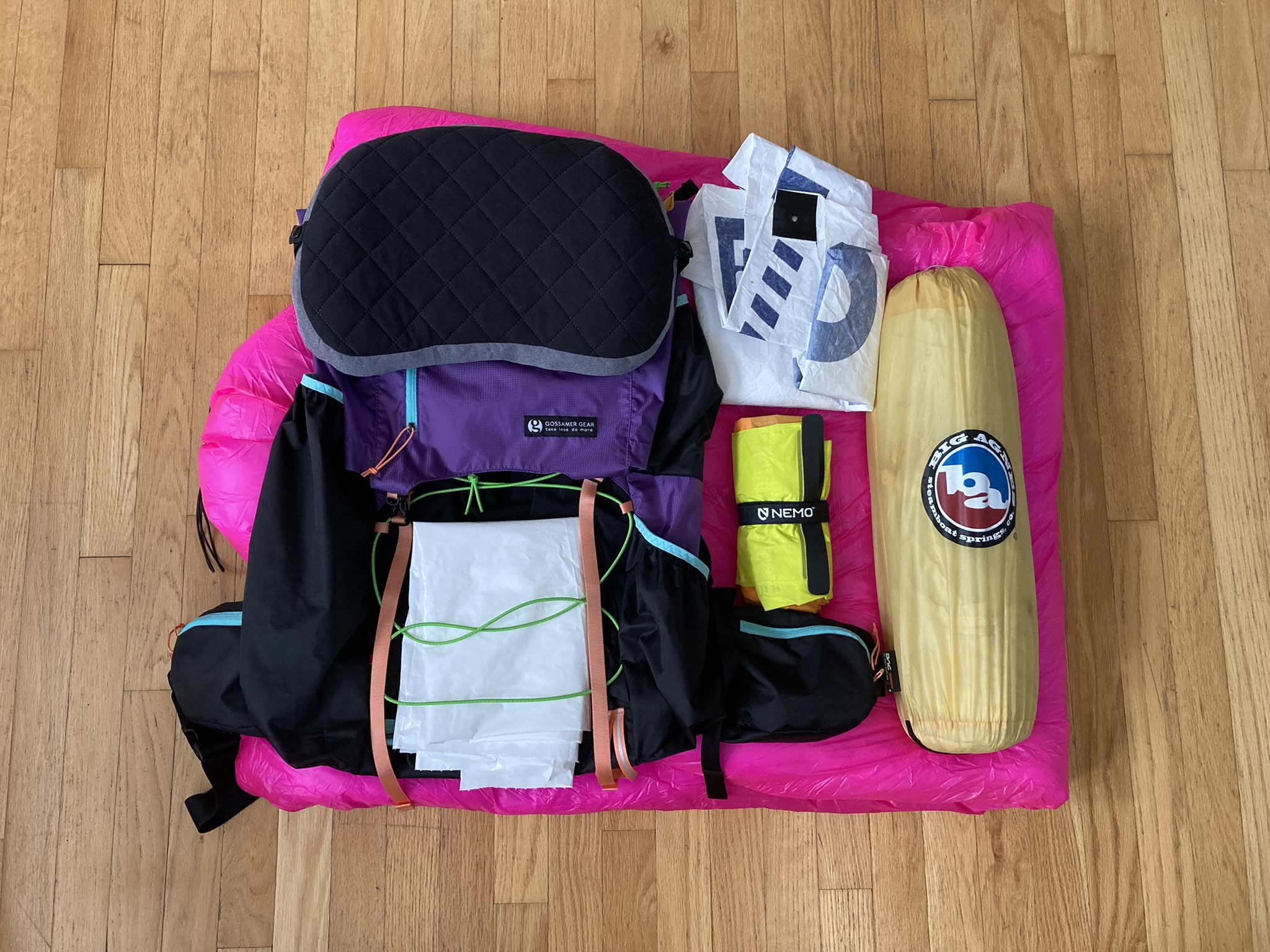




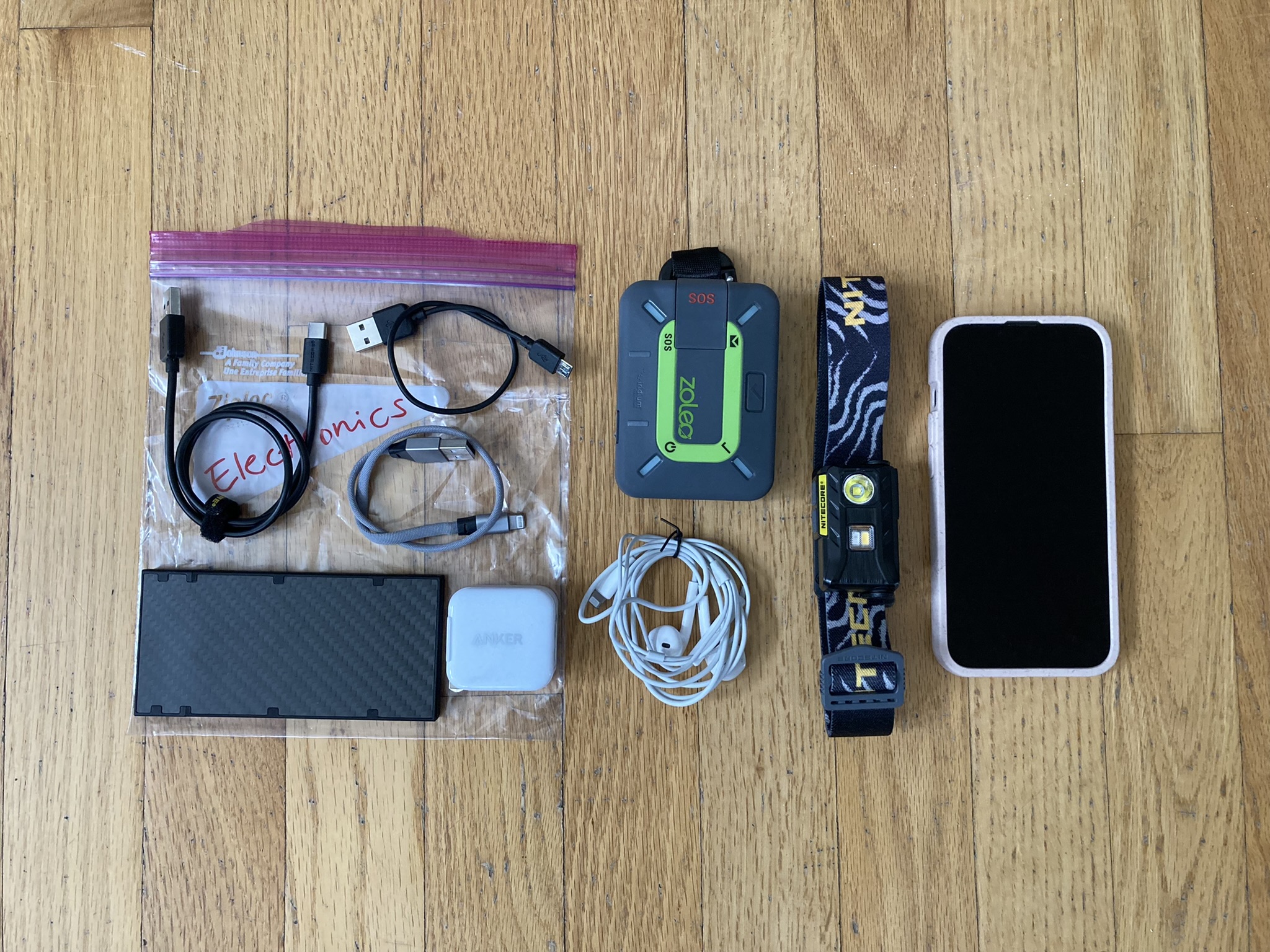
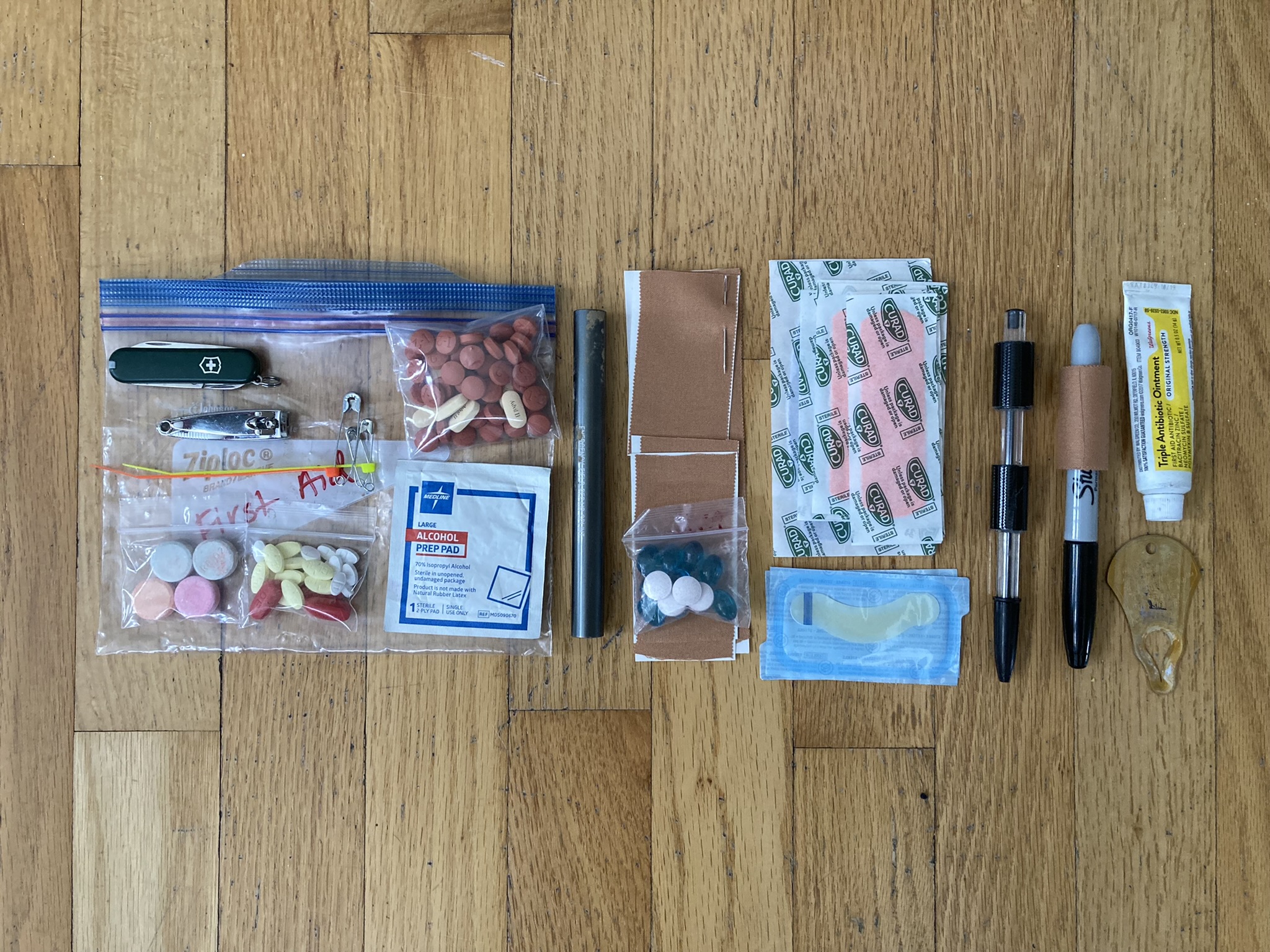

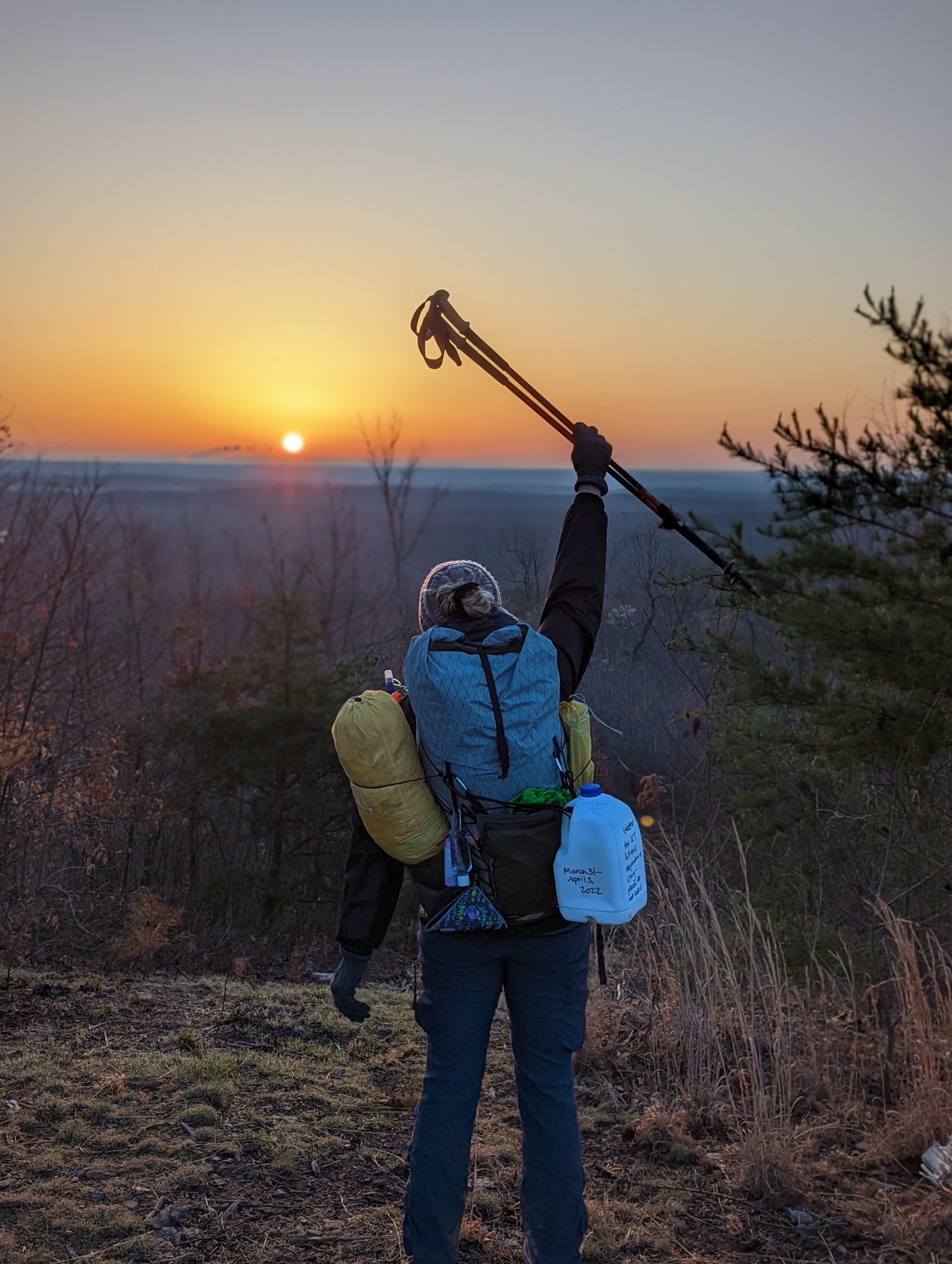


Comments 6
Happy to see the final gear list! Here’s hoping it serves you well and an awesome time along the trail!
Super article. I hope the decisions serve you well on the trail. Happy Hiking!
I second your choice of waterproof socks! You’ll be so happy to have dry feet and few if any blisters. I hike in sandals and wear the Rocky brand of waterproof socks over Injinji nuwool toesocks. Looks weird but my feet stay clean, dry and warm.
When do you start?
I started March 19th!
I, too, have Raynaud’s, and I am light- and noise-sensitive. Wearing dishwashing gloves to set up your tent or do other chores that could wet the hands is genius!
I don’t know where you are right now (July 11, 2023), but if you are entering Vermont, be aware that most waterways have flooded and we are under a state of emergency. Many trail access roads are closed, if not completely washed away. Follow conditions on the NewEngland511 website.
Best of luck!